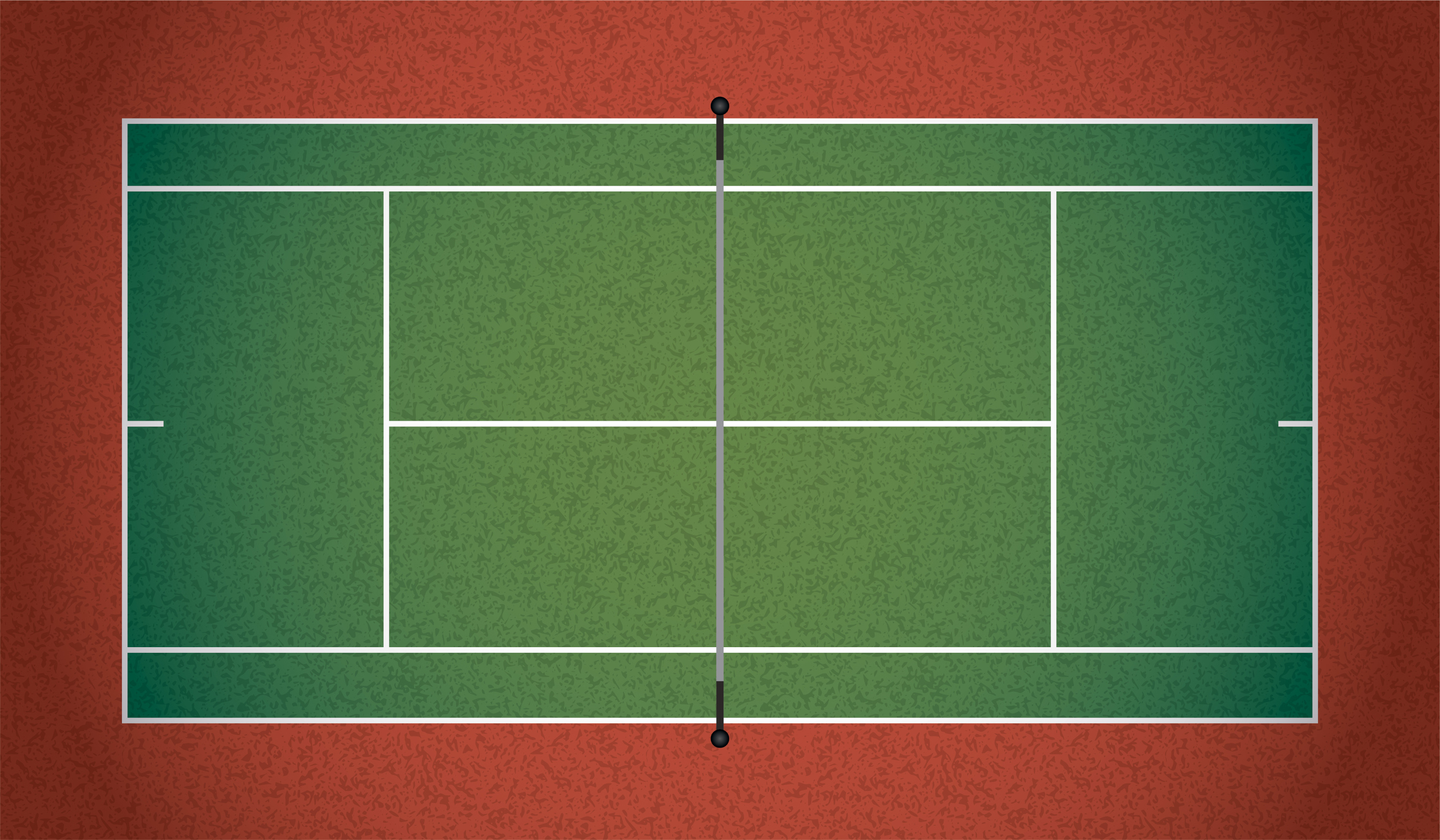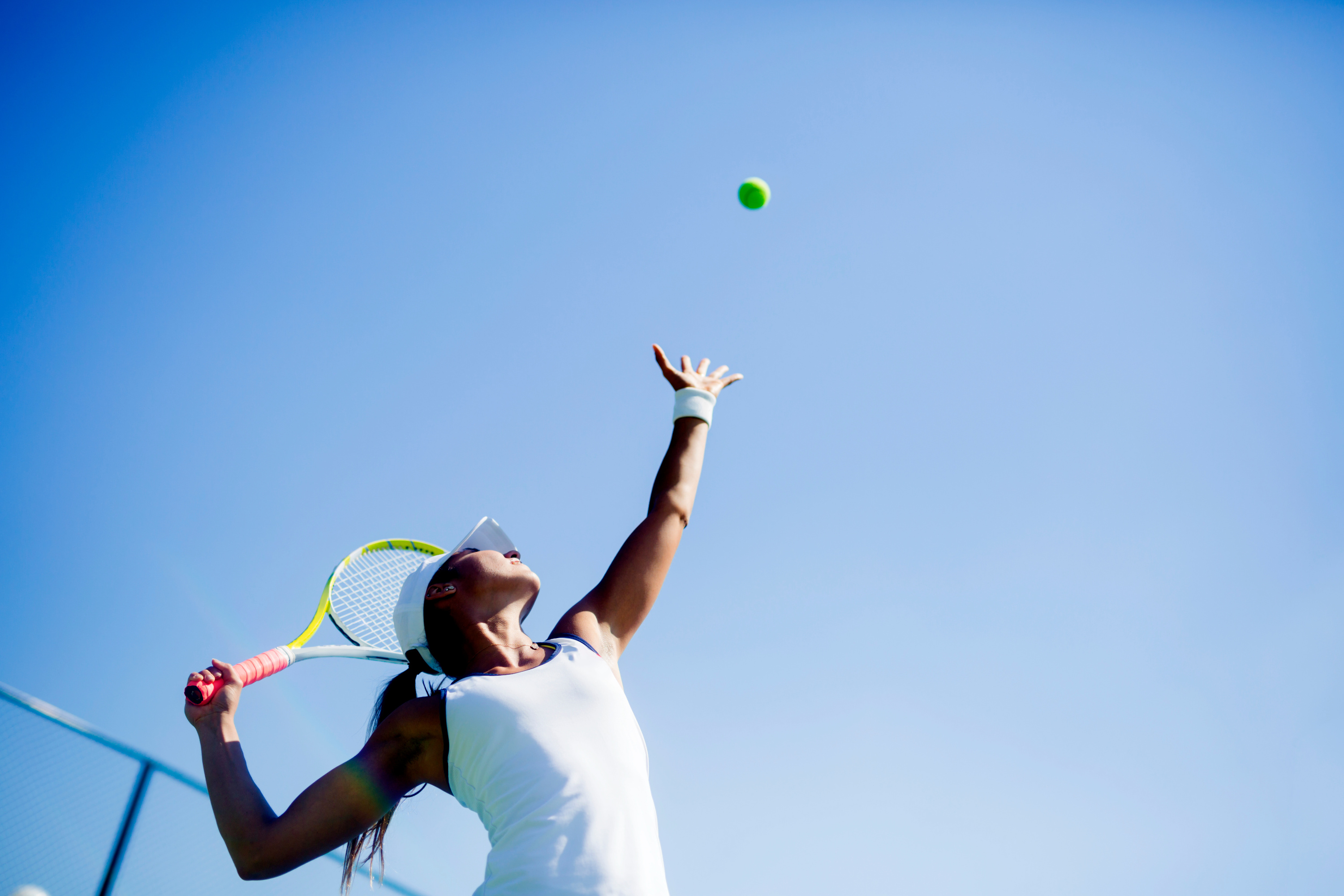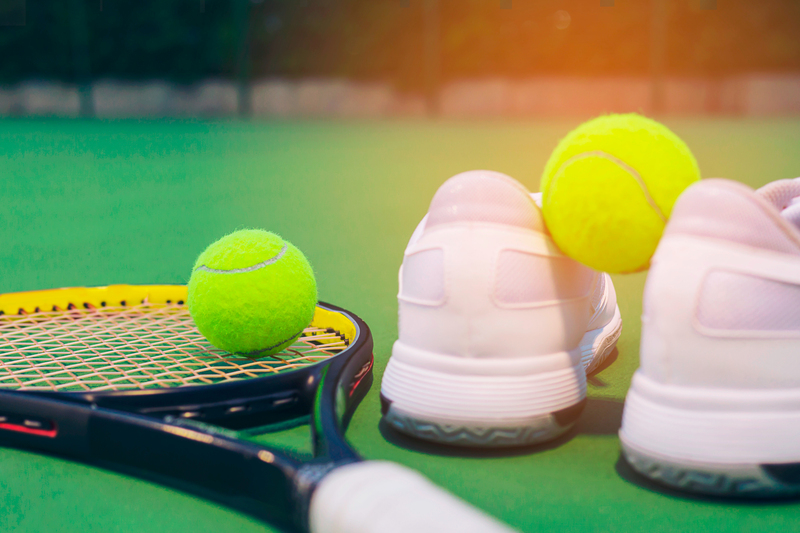Game, Set, Match: A Beginner's Guide to Tennis
Tennis is a fun and exciting sport that's enjoyed by millions of people worldwide, and it's no wonder why! It's fast-paced, strategic, and offers a great workout. In this beginner's guide, we'll take you through everything you need to know about tennis, including the rules, scoring, history, court, and other relevant information for beginners.
A Short History of Tennis
Tennis originated in 12th-century France, where it was called "jeu de paume," or "game of the palm." It was played by hitting a ball with the hand. Over time, players began using gloves and then wooden racquets. In 1877, the first Wimbledon tournament was held, and tennis, as we know it today, was born.

The Tennis Court
A tennis court is rectangular, and it can be played on various surfaces such as grass, clay, or hard court, with a net in the middle. The standard court size is 78 feet long (23.77 m) and 27 feet wide (8.23 m) for a singles match and 78 feet long (23.77 m) and 36 feet wide (10.97 m) for doubles matches. The net divides the court in half, and the lines on the court indicate the boundaries of the playing area.
The net is 3 feet 6 inches high (1.07 m) at the centre and tapers down to 3 feet high (0.91 m) at the ends. The court is marked with lines to indicate the boundaries of play. The outermost lines are the baselines, while the lines perpendicular to the net are the sidelines.

The court is divided into two halves by the net. Each half is further divided into two areas: the service area and the backcourt. The service area is the area closest to the net, while the backcourt is the area behind the service area. The service area is further divided into two boxes, one on each side of the court. These boxes are called service boxes and are marked by the centre service line and the service sideline.
By understanding the layout of the court and the different areas, you can better understand the strategies and tactics used in tennis. So next time you're on the court, take a moment to appreciate the dimensions and boundaries of the playing surface.
Try Sportmember for free - Create profile
Rules of Tennis
To play tennis, there are a few basic rules you should know. Here are the most important rules to get you started:
- The game starts with a coin toss to determine who serves first. The winner of the coin toss can choose to serve or receive first.
- The server must stand behind the baseline and hit the ball into the opposite service box on the other side of the net. The serve must land in the service box, or it's called a fault.
- Players take turns serving, and the server alternates sides of the court after each point.
- A point is won when the opponent fails to return the ball over the net, hits the ball out of bounds, or commits a fault.
- The first player to win four points wins the game. However, if the score is tied at 40-40, also known as "deuce," a player must win two points in a row to win the game.
- A set is won when a player wins six games and is ahead by at least two games. If the score is tied at six games apiece, a tiebreak is played to determine the winner of the set.
- A match is typically played as the best of three or five sets, depending on the tournament or level of play.
By following these basic rules, you can start playing tennis with confidence and have a better understanding of the game.

Scoring in Tennis
Tennis scoring can seem a bit confusing at first, but it's actually quite simple once you get the hang of it. Each game starts with a score of zero, or "love." As the game progresses, the score increases by one point with each successful shot.
Game points
The first point is scored as "15," the second as "30," and the third as "40." If both players are tied at 40-40, it's called "deuce," and the game continues until one player wins two consecutive points.
Deuce and Advantage
Here's where things get a bit tricky. The player who wins the next point after deuce has the "advantage." If the player with the advantage wins the next point, they win the game. If they lose the point, the score returns to deuce.
An Example of Deuce and Advantage
For example, let's say the score is tied at deuce, and Player A wins the next point. They now have the advantage, and the score is "Advantage A." If they win the next point, they win the game. If they lose the point, the score goes back to deuce.
It's important to note that if the score is tied at "Advantage A" or "Advantage B" and the player with the advantage loses the next point, the score goes back to deuce. This process can continue for several rounds until one player wins two consecutive points and the game.
By understanding the scoring system and how deuce and advantage work, you can better enjoy watching and playing tennis.
Tennis equipment
Here's some of the basic equipment you'll need to play tennis:
- Tennis Racket: The tennis racket is the most important piece of equipment for playing tennis. Beginners should look for a racket that is lightweight and easy to swing. It's recommended to get a racket with a larger head size, as this will provide more forgiveness for off-centre hits. Choose a racket with a comfortable grip size that fits your hand.
- Tennis Balls: Tennis balls are needed to play tennis. Look for balls that are designed for the beginner or recreational play, as these are usually softer and easier to control. Buy a few extra balls so you always have a backup.
- Tennis Shoes: Tennis shoes are designed specifically for playing tennis and provide the necessary support and stability for the quick lateral movements required in the game. Look for shoes with good traction and cushioning for comfort. If you're just starting out, any sports trainers are a good option.
- Tennis Apparel: Comfortable, breathable clothing is important for playing tennis. Choose clothing that allows for freedom of movement, such as shorts, skirts, or athletic pants. A moisture-wicking shirt will keep you cool and dry during long matches.

By having the right equipment, you can focus on enjoying playing some tennis and improving your skills. A tennis racket, balls, shoes, and comfortable apparel will help towards a successful game. Remember to choose equipment that fits your skill level and playing style, and always keep safety in mind. The right gear can help you to become a better tennis player!
TIP: Get our free Line up builder APP
National and International Governing Bodies
In the UK, tennis is governed by the Lawn Tennis Association (LTA), which promotes the sport and encourages participation at all levels, from grassroots to elite. On an international level, tennis is governed by the International Tennis Federation (ITF), which organizes major tournaments like the Davis Cup, the Fed Cup and oversee the 4 Majors (grand slam tournaments).
The four Grand Slam tournaments are:
- The Australian Open (in January)
- The French Open (from late May to early June)
- Wimbledon (late June to early July)
- The US Open (August–September)
Each Grand Slam tournament is played over two weeks. The Australian and the United States tournaments are played on hard courts, the French on clay, and Wimbledon on grass.
Grassroots Participation in Tennis
At its core, tennis is a sport that is meant to be enjoyed by everyone. Whether you're just starting out or are an experienced player, there's always room for more people to get involved in the sport. In the UK, the LTA runs programs designed to encourage people of all ages and abilities to get involved in tennis, from coaching programs for kids to social tournaments for adults. So, whether you're looking to improve your skills or just want to have some fun, there's never been a better time to get involved in tennis!
Is Tennis for you?
Tennis is a fantastic sport that's easy to learn and play. Whether you're a beginner or an experienced player, there's always room to improve your game. With the right equipment, coaching, and practice, you can become a skilled tennis player and enjoy all the benefits that come with playing this exciting sport.
With this beginner's guide, you should now have a good understanding of the rules, scoring, court, and other relevant information. So grab a racquet and hit the court to start practising your new knowledge!
Tennis and SportMember
We hope this beginner's guide has helped you understand the basics of Tennis and inspired you to pick up a racket and ball and give it a try. Remember, the key to becoming a good tennis player is practice, so get out there and start playing!
The full overview and laws of the game can be found on the ITF website. There are thousands of tennis clubs in the UK, and many of them are using a club management system, like Sportmember, to streamline their club admin and help save time running their club.
SportMember allows you to gather all the club's functions in one place; member database, calendar and event planning, attendance, membership fees collection, and so much more (including a fully integrated and free website).
Creating a club profile on SportMember will help you run and structure the club, and save you a lot of time on otherwise manual tasks. Try it out by clicking "Create profile" below.